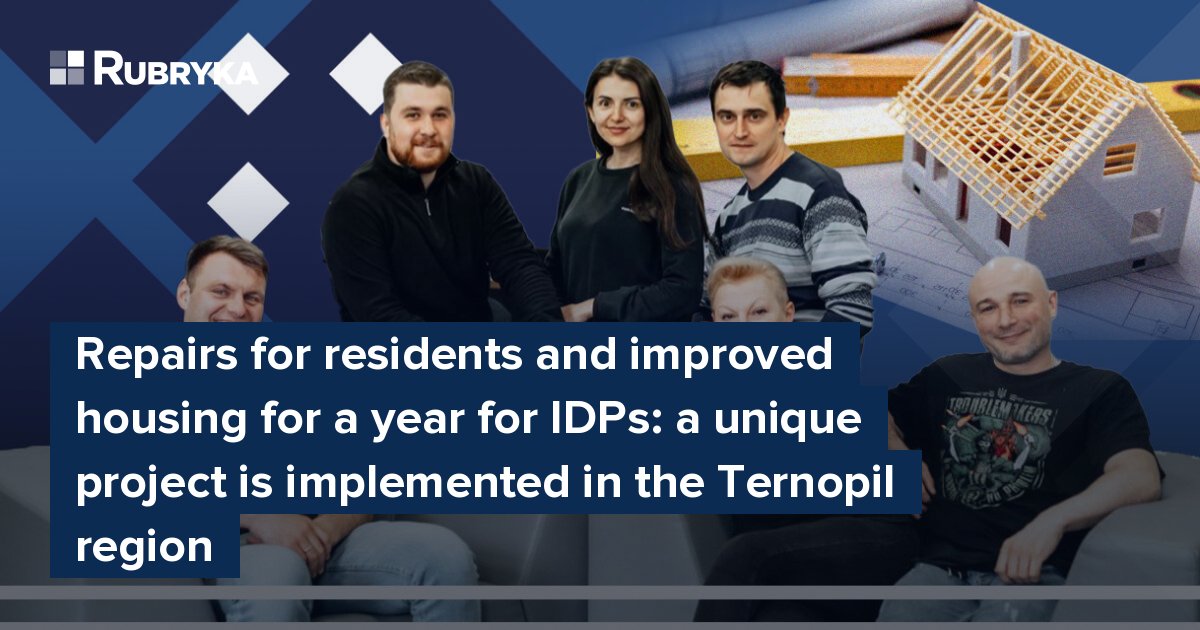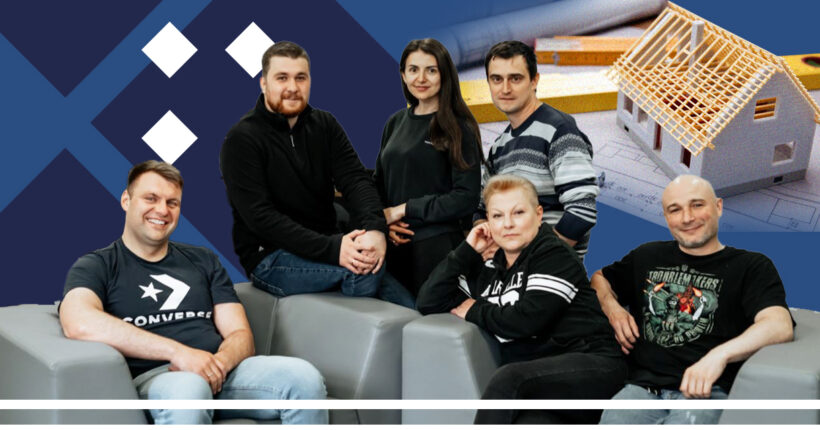
What is the problem?
Because of the war, millions of Ukrainians became displaced people. The communities that accommodated them do not always have sufficiently furnished housing, so many people have had to live in minimally comfortable conditions for a year and a half.
What is the solution?
In the Kopychyntsi City community in the Ternopil region, the charity organization NAVKOLO, with the support of the CORE Response charity organization, is renovating private houses for more comfortable long-term living for 116 displaced people from different war-affected regions of Ukraine. In addition to creating better living conditions, the project aims to unite the community by encouraging interaction between new and permanent residents.

Most of the houses participating in the project need to be supplied with water.
How does it work?
The humanitarian headquarters developed into a charitable foundation
The population of Kopychyntsi and nearby villages is approximately 13,500, and the community accepted about 1,000 IDPs after February 24, 2022, when Russia launched its full-scale invasion of Ukraine. Arseniy Kelichavyi, one of the founders of the charity fund NAVKOLO, lived in Irpin, in the Kyiv region, before the full-scale invasion and was forced to return to his small hometown in Kopychyntsi, together with his wife and three children.
Here he became one of the initiators of the humanitarian headquarters which, thanks to volunteers, began covering the primary needs of the displaced and helping the military. Many displaced people also became volunteers at the headquarters. In the end, they all formalized their volunteer activities so that it was possible to attract funds from donations more actively.
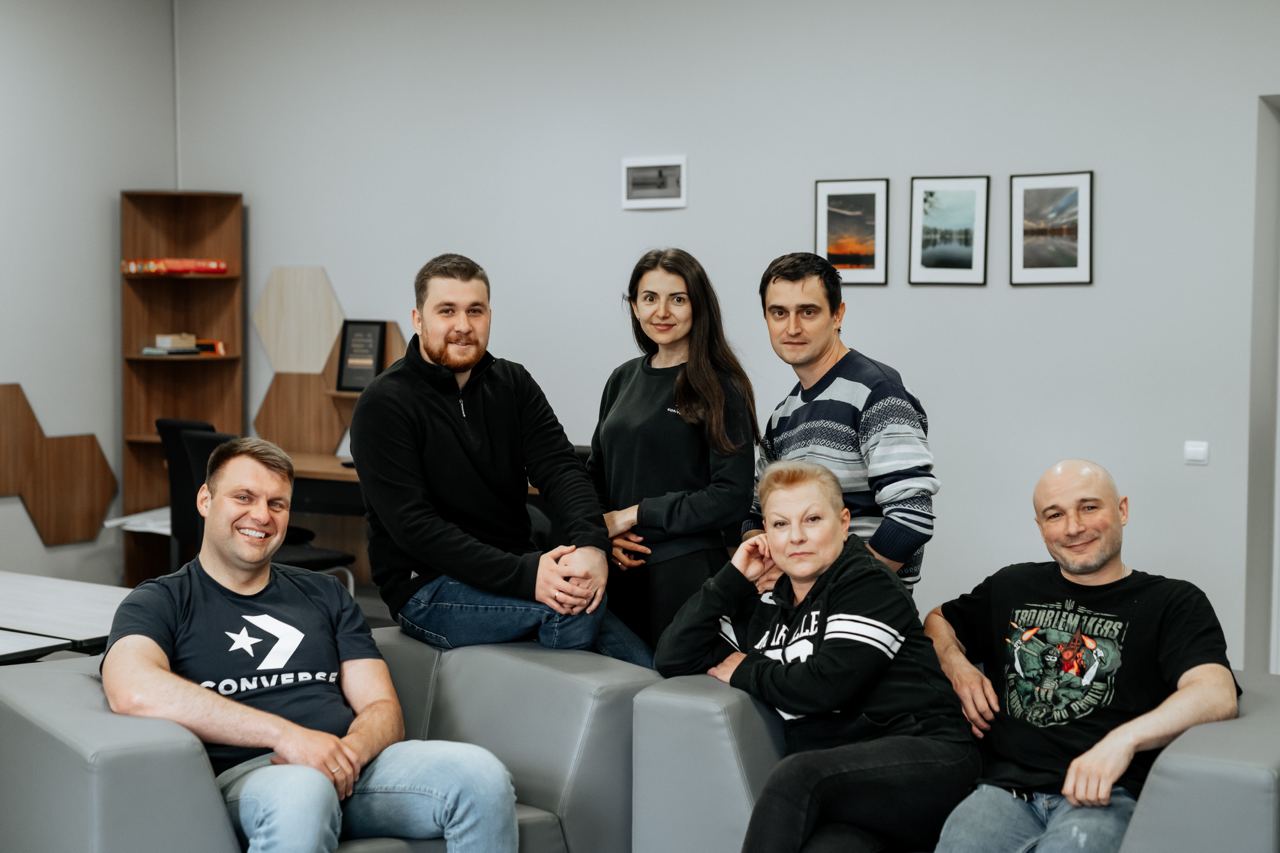 Part of the team of the charitable organization NAVKOLO. Arseniy Kelichavyi, is on the far left.
Part of the team of the charitable organization NAVKOLO. Arseniy Kelichavyi, is on the far left.
They turned to CORE Response, a charitable organization founded by Hollywood actor and director Sean Penn, which primarily helps to provide for the needs of displaced people in Ukraine.
The charity fund attracted donor funds
Initially, thanks to cooperation with СORE, it was possible to make repairs in the accommodation center for IDPs, located on the premises of a kindergarten with only one bathroom. At the peak of the evacuation, 150 to 160 people lived in the center, says Kelichavyi. A joint project with СORE also allowed them to update the heating system and adjust the kitchen to the hub's needs.

The CORE Response fund provides long-term support to displaced people in renovating and improving housing conditions. Screenshot from the website of the CORE Response Foundation.
"There came a time when we all understood that living in a collective center is a temporary solution. To live comfortably in the community for a long time, this is not enough," says the executive director of the NAVKOLO charitable foundation.
How did the project idea come about?
It all started with a base of houses ready to host people
The idea arose out of a brainstorming with representatives of the CORE foundation. Last year, its executive director, Ann Lee, came to Kopychyntsi.
"They saw that we work well and report well, and they wanted to finance the repair of some other premises: so that people would not live in the kindergarten, and it could perform its functions. This other room would become a collective center. We toured all possible buildings in the community, but none were suitable," says Kelichavyi.
Then the volunteers recalled their experience after the start of the full-scale invasion: with the help of teachers, they then created a base of houses in the community ready to receive the displaced. They visited every house and got the necessary information.
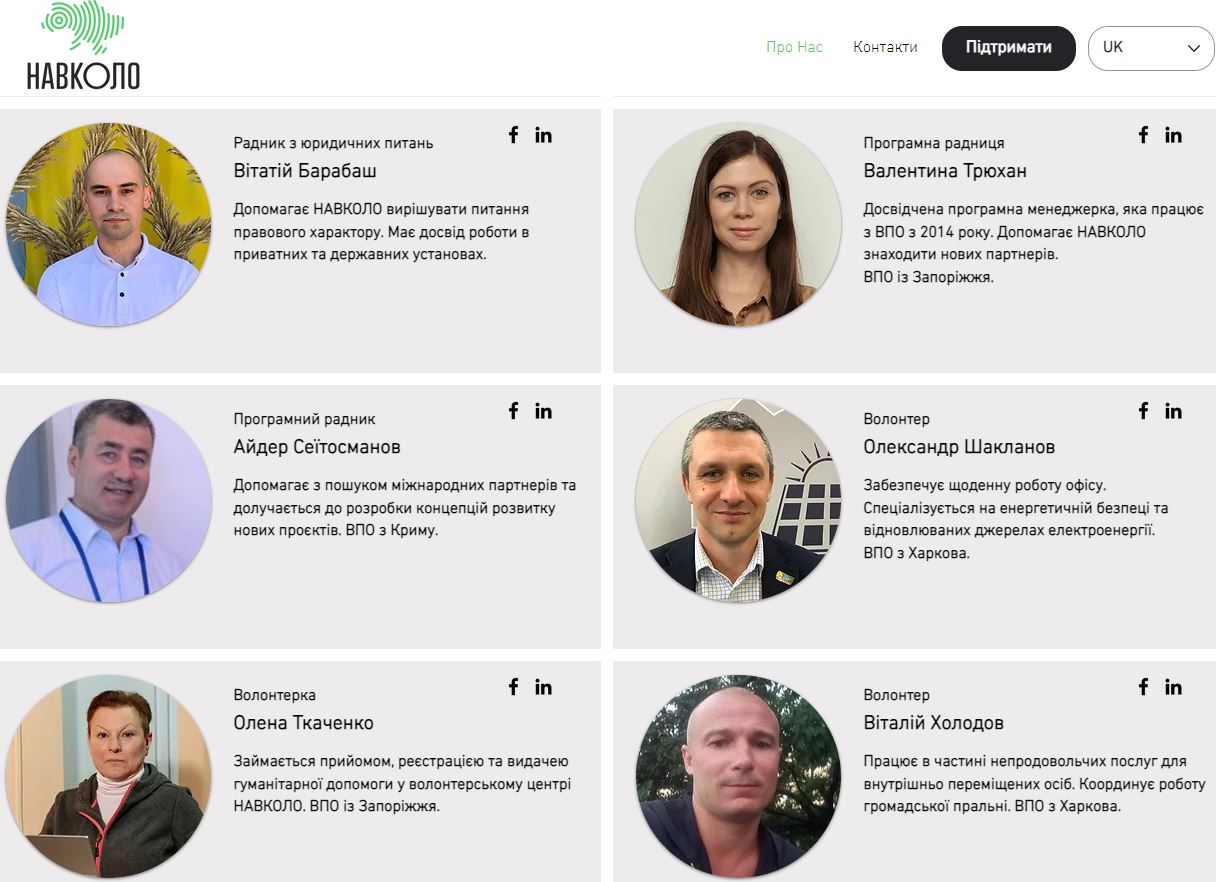
Part of the team of NAVKOLO is also displaced people.
NAVKOLO submitted a grant application to CORE to convert the same base of settlements that had received displaced people immediately following invasion into long-term housing. According to Kelichavyi, the city council then provided a list of 300 houses. After visiting almost every house, the list was reduced to about 60. They were all examined, and, in the end, there were 27 left, which became a part of the project.
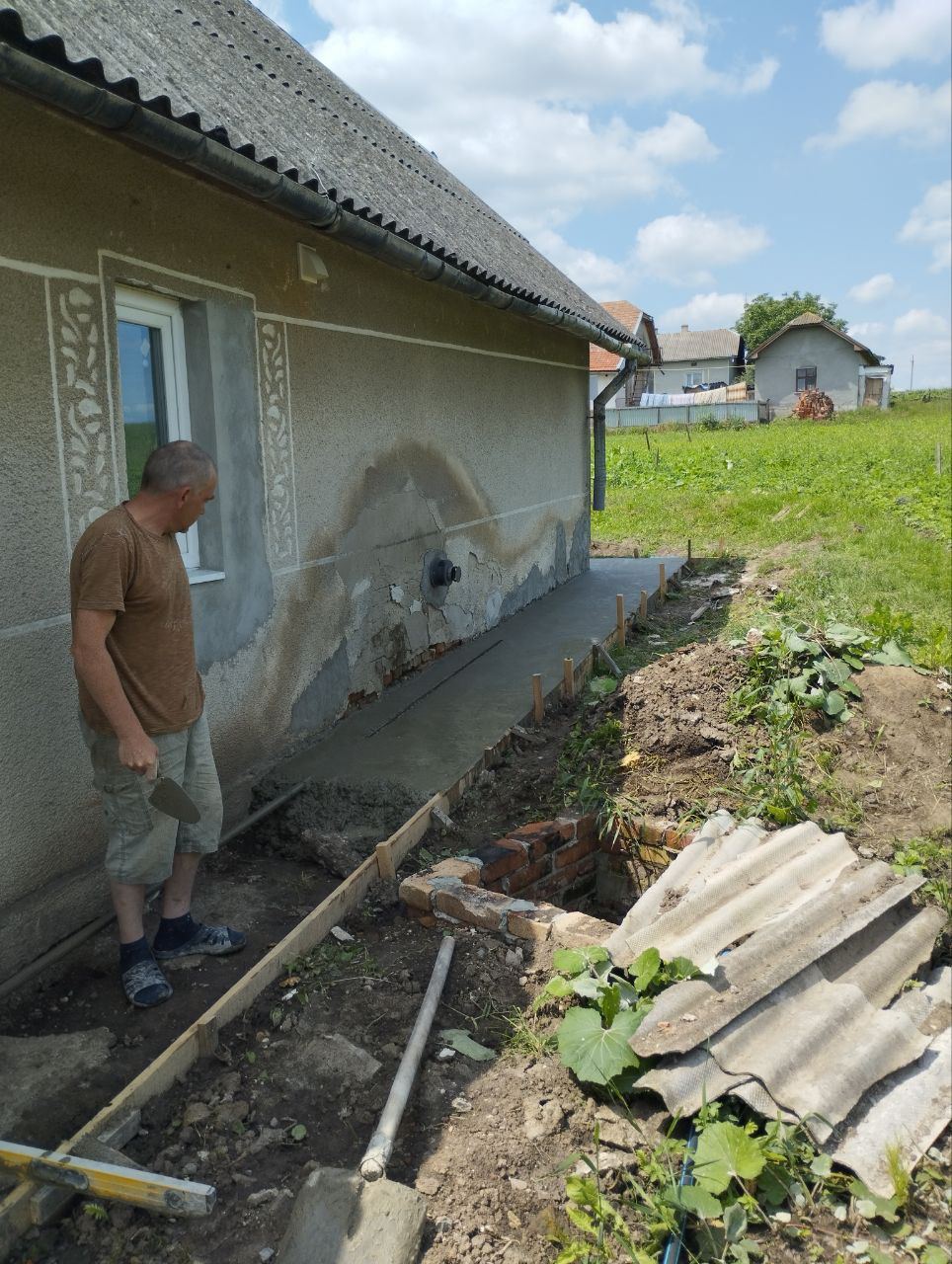
Renovation in full swing: renovation work on the first 15 houses will be completed by the end of July.
The idea of the project is that the team makes improvements, and in exchange for this, residents provide houses for displaced people free of charge for at least a year. This is a win-win strategy for both the owners and the settlers. "We think it's good for socialization, bringing people together. Communities' residents often say: 'Everything is for displaced people, but there is nothing for us.' In this case, we show otherwise. As far as I know, no one has done this in Ukraine," Kelichavyi told Rubryka.
What exactly is being improved?
Water is supplied to the houses, and heating is renewed
Because there is no municipal sewage system in Kopychyntsi, there are many private houses that do not have a water supply and drainage system.
Therefore, the priority works in this project are the construction of wells and septic tanks, water supply to houses, and the construction of bathrooms there.

The outbuilding of one of the houses is being transformed into a connected bathroom.
The second priority is replacing or repairing the heating system. Gas heating or electric convectors are being installed.
The team is repairing the roofs of several houses, cleaning and deepening wells in several yards.
Who is responsible for what? What are the guarantees?
All agreements are formal
Formally, the process looks like this: the displaced people address the charitable foundation NAVKOLO with a request that they need housing; and the owners of the houses, for their part, write requests for repairs in their homes.
A lease agreement is also concluded between the owners and the resettlers for free accommodation for at least one year.
"We have to certify that not only the owner has obligations, but also the settlers. They may be evicted if they violate the terms of the agreement. If this happens or someone leaves of their own free will, then other people can move into this house," explains Kelichavyi.

The crew is working on one of the first 15 buildings.
According to the terms of the project, the displaced people and the house owners live separately.
How long will the project last?
The work will be completed by the end of October 2023
Approximately 70% of the houses participating in the project are already occupied. For those which are not yet occupied, they changed what they could, but it is clear that they could not dig wells and install sewers, says the executive director of NAVKOLO.
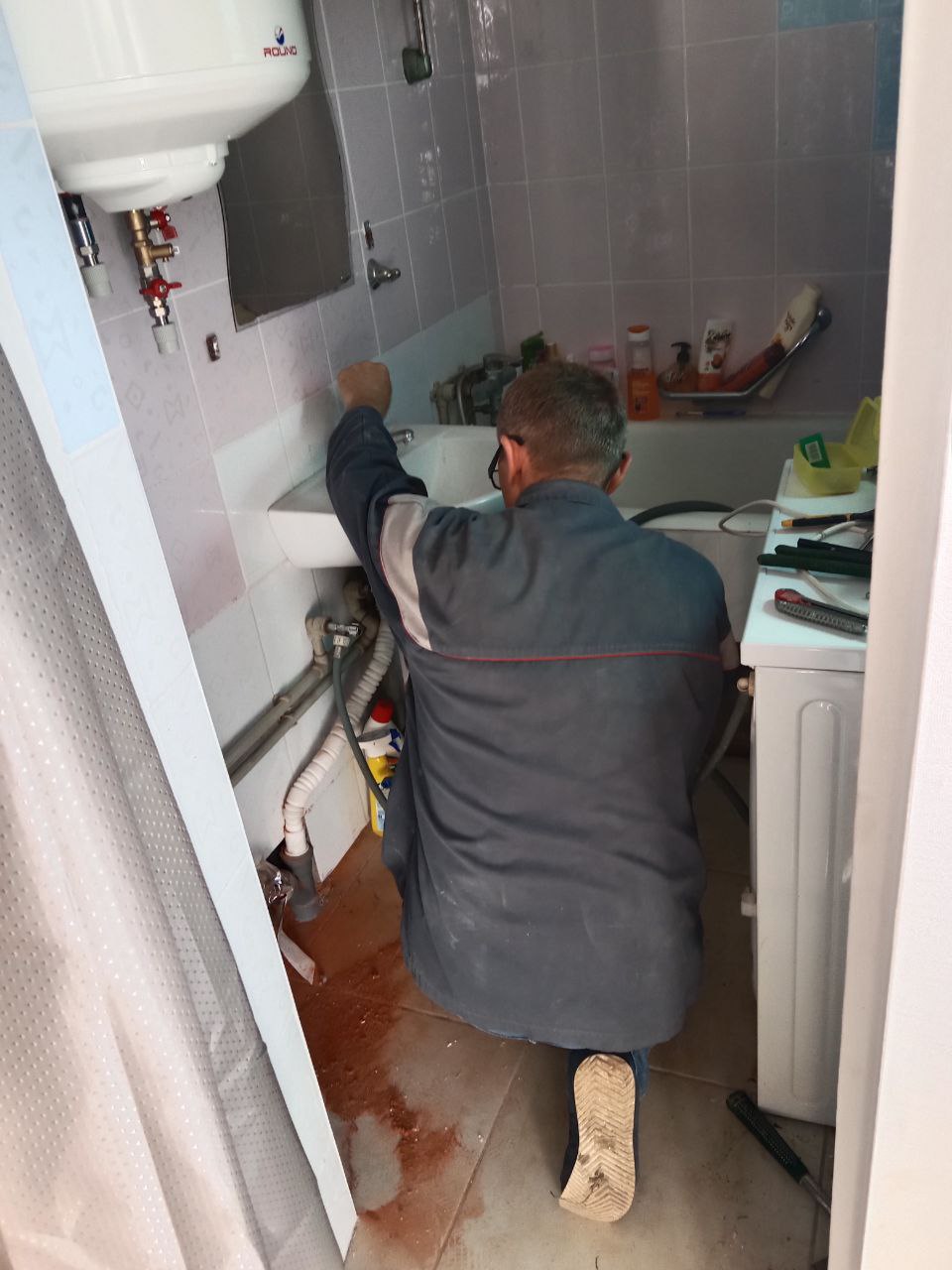
People are provided with household amenities inside the house.
Currently, renovation works are in full swing, and the first cohort of 15 houses should be completed by mid-August. The second phase of 12 houses will be renovated by the end of October 2023 so that people can comfortably spend the winter.
Is it possible to scale the project?
The idea is suitable for central and western regions
"When we formed this concept, we understood it could be scaled. Perhaps it will not be relevant for the eastern regions or the south, but for the central or western regions, it seems absolutely possible," Kelichavyi is convinced.If it is impossible to attract internal resources for this, then it is necessary to look for external ones. Most often, these are some grant funds.
One obstacle can be that there are not always people in small communities who understand how international charitable foundations work. After all, it is essential to communicate correctly – often in English – fill out the grant application correctly, find suitable contractors, make purchases following the grantor's policies, document everything, and report in English on all stages of work in a timely and correct manner. For example, on this project, NAVKOLO reports every two weeks, sending relevant photos and documents to grantees in the US.
"To receive grant funds, you need to understand how it all works and have a good story so people trust you," says Kelichavyi. The residents of Kopychyntsi are lucky here because Kelichavyi is the project manager of the British Council in Ukraine.
The project budget in the Kopychyntsi community is $110,000 for 27 houses. If the community has a professional resource, it is possible to attract these funds because you have to invest more in various collective centers, and they are a more temporary, not-so-successful solution.
Kelichavyi sums up: the idea is simple because there is no need to build anything new. It is necessary to choose a house that is already there, where the settlers probably already live. It's easy to make it in such a way that they live comfortably in the future.
"If people have housing and are confident that they will have it for a certain long period, then the next stage of socialization — finding a job, placing children in school — will be easier," Kelichavyi believes.
Does it really work?
"If we welcome people comfortably, there will be fewer misunderstandings"
"From the first day of the full-scale invasion, there were many displaced people. At first, it was the Kyiv region, and later — Zaporizhzhia, Kharkiv, and Donetsk regions. Accepting internally displaced persons as comfortably as possible has become our strategy. After all, then there will be fewer risks of conflicts or misunderstandings. That is why we worked for integration from the first days," says Bohdan Kelichavyi, the mayor of the Kopychyntsi community.
Bohdan and Arseniy are brothers. "The field of international development is quite difficult, and not everyone understands, so anyone knowing about it is useful, regardless of family ties," the head of the Kopychyntsi community is convinced. "That's why it helps us — we join forces, demarcate responsibilities and spheres of influence."
Before being elected mayor, Bohdan Kelichavyi dealt with international development projects: he worked on a project financed by USAID, the United States Agency for International Development.
"We will not go to Donetsk region; we plan to live here"
Story of Anastasia Lysachenko's family
Anastasia Lysachenko, with her children and husband, arrived in Kopychyntsi on March 26, 2022.
The family has already relocated twice: in 2014, when the war started in the east of Ukraine, they moved from Horlivka to the village of Yatskivka, on the border with the Kharkiv region, 28 kilometers from Izyum. Repairs were made in the old house left to the husband by his grandmother; all that remained was to cover the roof. They opened a shop opposite the house where Anastasia started working.
During an air raid on March 10, 2022, one of the bombs hit the Lysachenkos' shop. "It's good that we weren't at home. At the beginning of March, we visited friends with our children. They had a stove in their house, but it was freezing in our house without light," says Lysachenko.
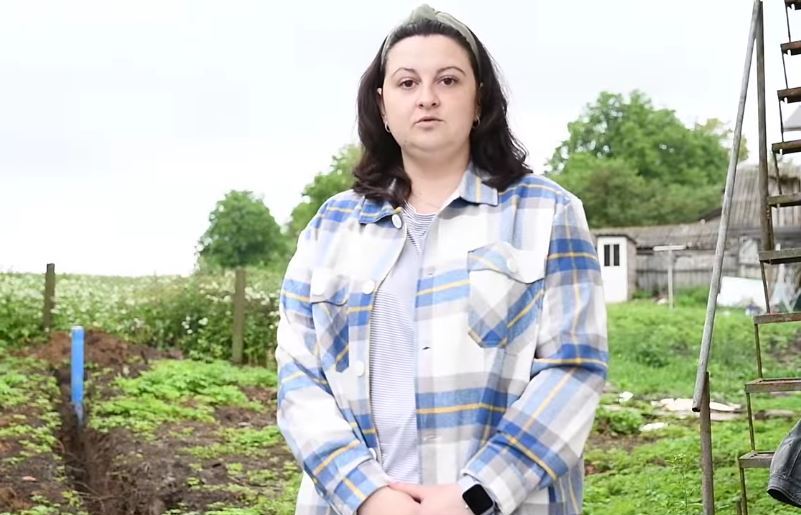
Following Russia's invasion in 2022, Anastasia Lysachenko became displaced for the second time.
They stayed with the children in basements for two weeks, then, with the help of a volunteer they knew, they came to Kopychyntsi. He already lived here and offered a friend's house. "There was a toilet outside, water was available from a well across the street, but we didn't care because we got the children out of the warzone," Lysachenko recalls.
Her oldest child is nine years old, and the youngest is four. The children had a hard time enduring the realities of war. The older child studied at school remotely because, at the beginning of the year, there were many air alarms, which scared her.
"Because she knows what an air raid is, what it is like when a plane flies, she knows how a bomb falls and how it explodes," says the mother.
In June last year, her husband went to join the military to defend Ukraine, and Lysachenko was working to make a living on her own, which was not easy. That's why she was pleased about such an opportunity from NAVKOLO and CORE.
At the time of our conversation, they had already dug a cesspool and made a well in the yard. "We still need to put rings under the septic tank, get water to the house, and make a shower and toilet inside the house," Lysachenko lists. "We are very grateful that they started doing it. We will live comfortably for another year, and people will at least have something to remember us by. After all, we have been living here for more than a year and only pay for utility services."
Only the walls remained of their own house in Yatskivka, and even those were cracked.
Lysachenko shares: "I don't really want to go back there, and there's nowhere to go. In September, it will be a year since the village was liberated, and there is still no electricity in our half of the village. Everything is mined, and specialists cannot get there. Buying a new house somewhere is better than rebuilding everything there. We really like it here."
Some of the displaced people have even agreed with the owners to buy the house in the future,with the completed repairs not increasing the housing price, Kelichavyi assures.
Even more useful solutions!
Public laundry and co-working space
The humanitarian headquarters of the Kopychyntsi community, from which the NAVKOLO was created, also set up a free public laundry and a co-working space for the displaced.
Because many houses do not have a water supply and, accordingly, it is not possible to install a washing machine there, public laundry service is a relevant need here.
People can come to work in a coworking space, and volunteers organize various events for them.
Also, an enterprise from the Kharkiv region, which started office furniture production in 2022, relocated to the community. Both locals and IDPs work there, so socialization is happening little by little.
Other solutions
Help from Bozeman volunteers
Financial support of the CORE fund is not the only American contribution to the well-being of the Kopychyntsi community. Volunteers from the Ukraine Relief Effort organization also work here, helping the community and displaced people to improve their quality of life. The organization originated in the city of Bozeman, in the state of Montana.
The mayor of Kopychyntsi once met the director of this city's ecological development department at a conference in the US.
"When the full-scale invasion began, he wrote to me, talked to various media, and organized fundraising in his city. All those who care there have united in the charity organization Ukraine Relief Effort," says Bohdan Kelichaviy.
Volunteers of this organization repeatedly came to Kopychyntsi, helped to purchase a bus for the humanitarian headquarters, and repeatedly supported the local hospital. Many of them are architects by profession, so they wanted to get involved in arranging housing for displaced people.
Two of the volunteers even decided to live in Kopychyntsi – in particular, the head of the Ukraine Relief Effort, Michael Behm. In parallel with the project of the NAVKOLO charity fund, he helps to make repairs in the temporary housing of resettled people.
His approach is more flexible, says Kelichavyi. Behm and his colleagues collect funds for the individual needs of a specific family and house, so they can buy furniture and some household appliances for people. The CORE project does not provide for this, so Kelichavyi and his colleagues sometimes turn to Behm for help so that he can complete the renovation of one of the buildings.
One of the Ukraine Relief Effort projects is repairing a temporary home of an older lady with reduced mobility, who came to Kopychyntsi from Sloviansk in the Donetsk region with her granddaughter last summer.
"Weeds were growing through the floorboards in the house, the walls in the kitchen were terrible. The house was freezing in the winter without a gas connection, and they could only cook with electricity. In winter, electricity was only available for a few hours a day," the Ukraine Relief Effort Facebook page shared about the family's situation.
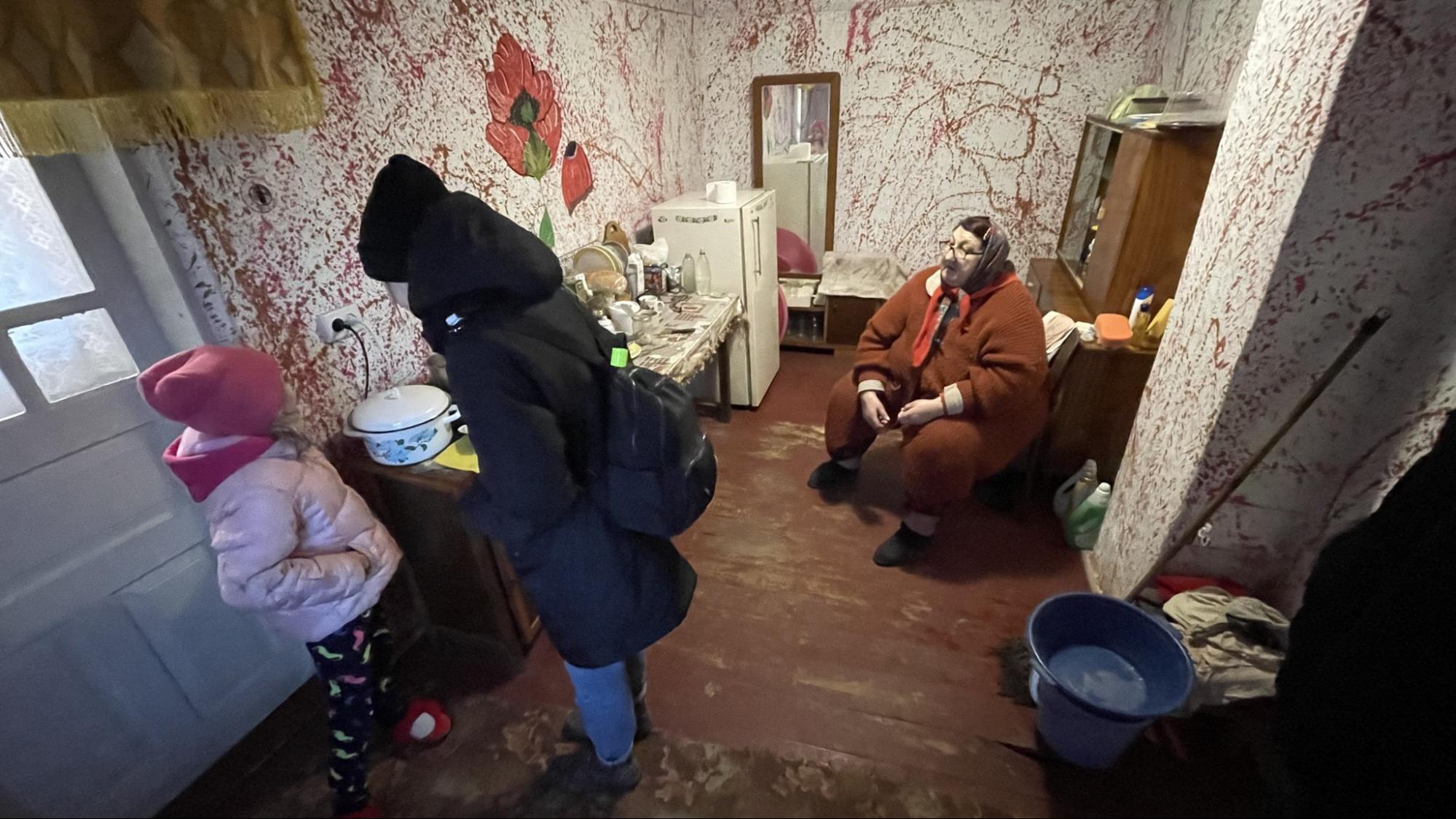
A family from Sloviansk now lives in a renovated temporary home. Photo from the Ukraine Relief Effort Facebook page.
Thanks to volunteers, gas was piped into the house, a meter was installed, and convection heaters were installed in the bedroom and kitchen. The walls and ceiling in the kitchen were decorated and painted. Several rotten boards were replaced in the kitchen and hallway. A boiler, sink, stove, and cabinets were installed in the kitchen. The toilet room was cleaned and repainted.
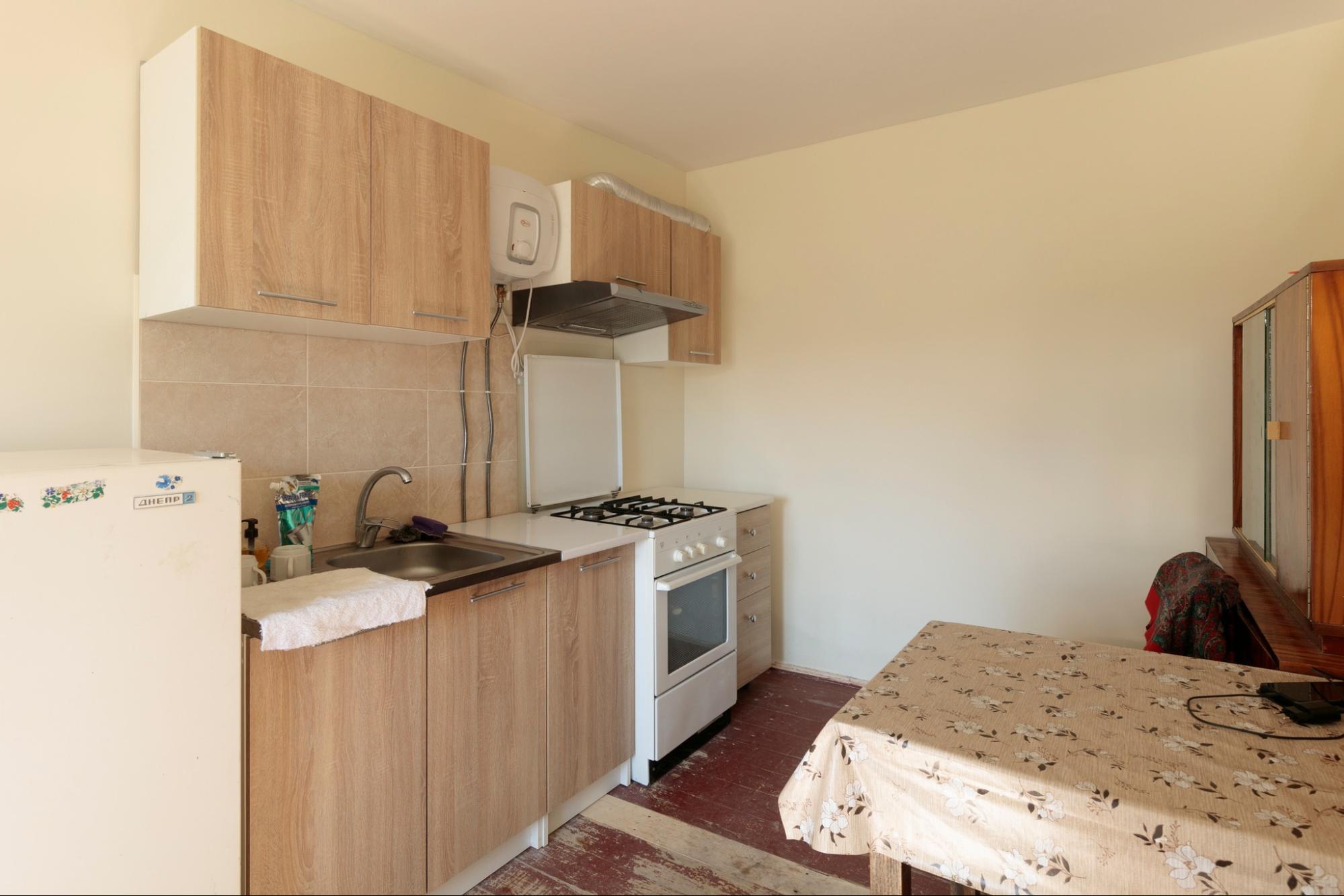
A new kitchen was created for a family from Sloviansk. Photo from the Ukraine Relief Effort Facebook page.
This contribution is no less important.

TatoHub: community spaces across Ukraine help families cope with the psychological challenges of war

VSELI HUB: teenagers in the Chernihiv region village created a special youth space



